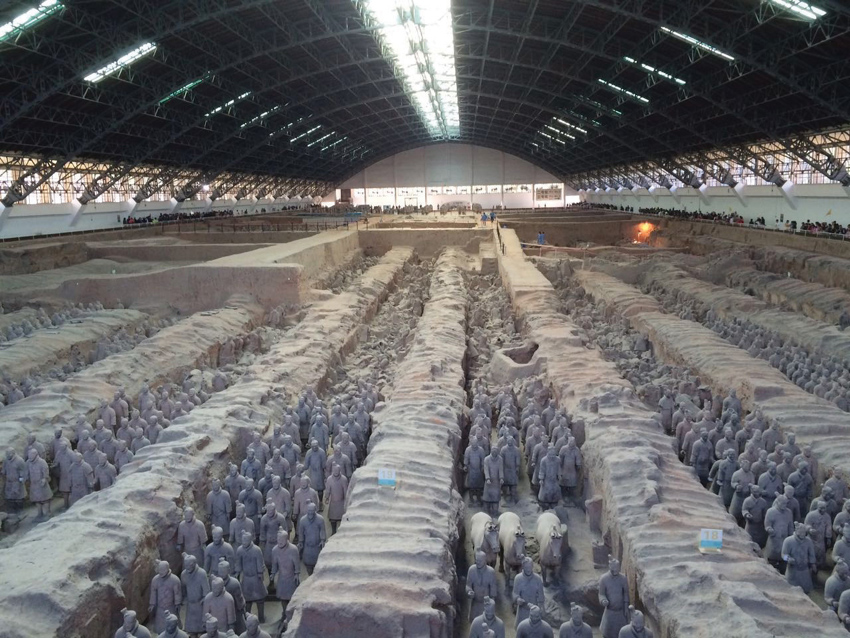Renishaw inVia Used To Study The Terracotta Warriors And Horses Of The Qin Dynasty
Known as the ‘Eighth Wonder of the World', the Terracotta Warriors and Horses site was discovered in 1974

It consists of three figure pits covering an area over 20,000 square metres and forms part of Emperor Qin Shihuang's Mausoleum Site Museum, the largest imperial tomb in China.
The pits contain approximately 8,000 terracotta warriors and horses, as well as over 100 chariots. In 1987 they were included in the ‘World Heritage List' by UNESCO.
The sculptures are located in Lintong District, Xi'an, Shaanxi Province, China, which sits 1 km to the east of Emperor Qin Shihuang's mausoleum. Each life-sized figure is unique, with intricate details, including individual facial expressions and costumes. Originally the terracotta warriors were painted in bright pigments but, over 2000 years, the colours have faded and only small traces of pigment can be found on their faces, hands, costumes and shoes.
The conservation, study and analysis of these precious ancient cultural relics is incredibly complex. Dr. Yin Xia, the Deputy Director of the Relics Conservation and Restoration Department at the Emperor Qin Shihuang's Mausoleum Site Museum, has used Raman microscopy to study historical relics since 2006.
In 2008, the museum purchased a Renishaw inVia confocal Raman microscope to help identify pigments on the terracotta figures, as well as determining key information required for their conservation and restoration.
In addition to his work with Emperor Qin Shihuang's Mausoleum Site Museum, Dr. Xia is the Deputy Director of the Key Ceramic Painted Cultural Relics Research Site, under the State Administration of Cultural Heritage, as well as a part-time tutor of North-West University, China.
At the university, his research mainly focuses on the analysis and identification of painted relics.
Dr. Xia started his analysis of the ancient pigments of cultural relics in 2003 and has made a number of landmark discoveries. For example, under the polarizing microscope, Chinese Blue (BaCuSi4O10), Chinese Purple (BaCuSi2O6) and dark blue particles of a new pigment (BaCu2Si2O7) often co-exist in a sample. As they appear in minute amounts—sometimes there are only one or two particles—it is hard to separate them individually with regular analytical means. Dr. Xia first discovered the new dark blue pigment with the inVia Raman microscope1.
Dr. Xia has participated in a number of conservation programmes on the historical relics of Emperor Qin Shihuang's mausoleum and Qin terracotta figures. Since 2004, he has been focusing his research on painted terracotta figures and pigments on historical relics. He has completed the analysis of murals and painted relics at nearly one thousand sites distributed in 14 provinces and autonomous regions in China.
CONTACT
Chris Pockett
Renishaw plc
chris.pockett@renishaw.com
www.renishaw.com
+44 1453 524524
Monday 11 April 2016 / file under Technology | Engineering


